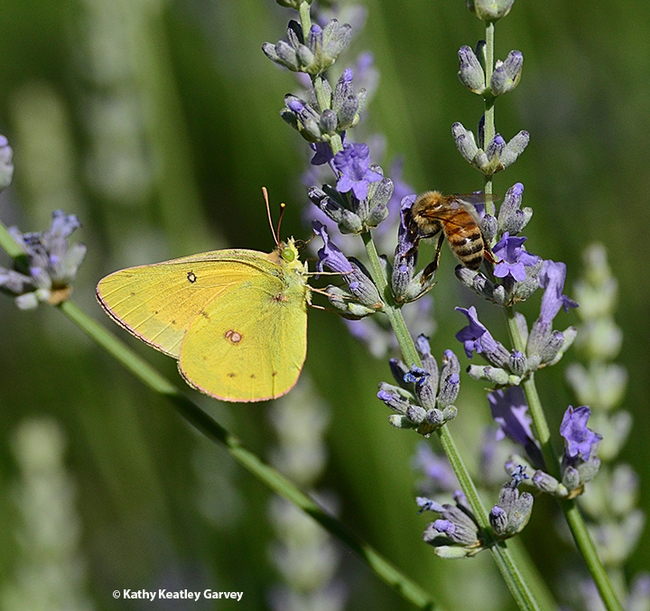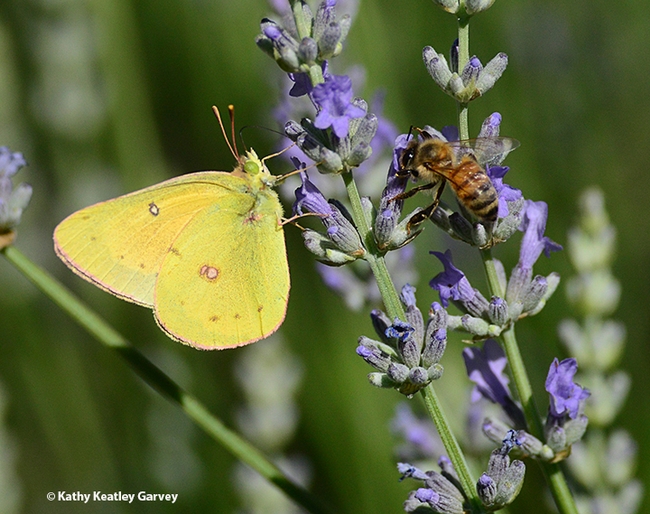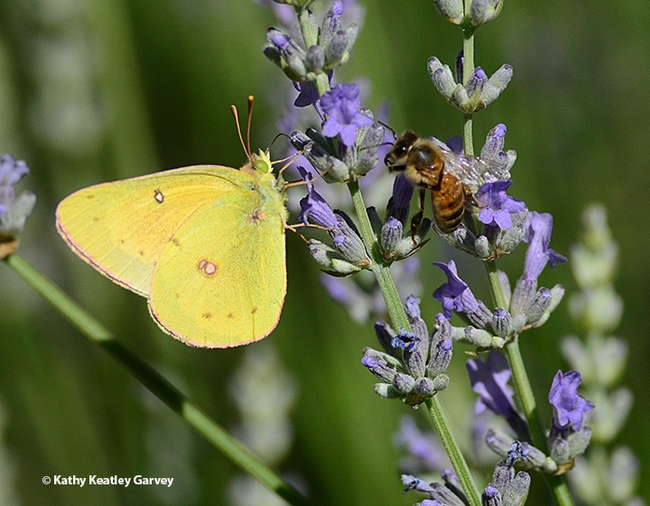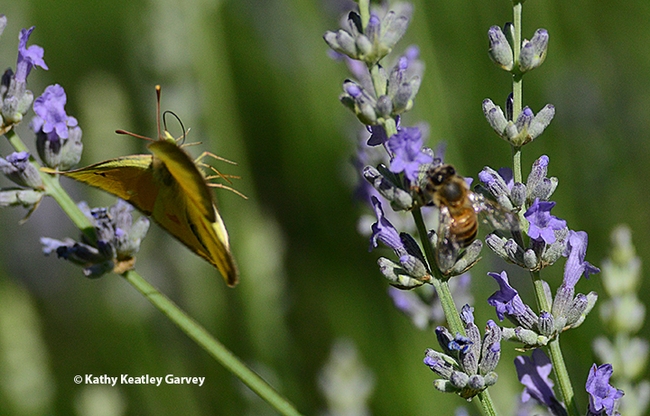Shapiro, a 50-year member of the UC Davis faculty, says that "Although it is a significant alfalfa pest, this butterfly overwinters as a larva almost entirely in annual vetch at low altitudes, and colonizes alfalfa only as the vetch senesces in May-June. Aside from alfalfa and annual vetches, it also breeds on a variety of clovers and sweet clovers and occasionally on lupines."
Attached Images:

A sulphur butterfly, Colias eurytheme, and a honey bee, Apis mellifera, meet on lavender. The butterfly is a male, as identified by Art Shapiro, UC Davis distinguished professor of evolution and ecology. (Photo by Kathy Keatley Garvey)

Hey, bee, I was here first! (Photo by Kathy Keatley Garvey)

Hey, butterfly! I was here second. (Photo by Kathy Keatley Garvey)

The male butterfly, leery of the encroaching bee, takes flight. (Photo by Kathy Keatley Garvey)